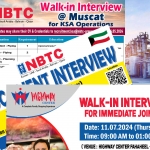Indian Roads Endanger Ways of Life
The Role of Wilbur Smith Associates
Olive ridley sea turtles are amazing creatures. Every year between December and March, hundreds of them swim home to lay their eggs on the beaches of the coastal metropolis of Chennai, aka Madras, in the southern Indian state of Tamil Nadu. Enacting a ritual that pre-dates the dinosaurs, gravid turtles swim back to the same beaches where they were hatched, undeterred by the hostile changes these shores have undergone in modern times.
For nearly two decades, youngsters inspired by the city-based Student Sea Turtle Conservation Network, have patrolled a 7-mile stretch of city beach to ensure that nesting turtles are not disturbed. In the last 11 years, they have helped 30,000 hatchlings start their journey all the way to the Australian seas. More than a decade later, those same Ridleys, weighing in at 80 to 100 pounds, will return to the beaches where they were hatched.
As a teenager, one of those young activists had vandalized the turtle nesting spots he now works to save. "Along with other fisher boys, I'd dig up the eggs," says Saravanan Kasinathan, now 27. "The eggs are like hard rubber; we'd play cricket with them. Even a decade ago, the main threats to turtles were from dogs and boys like us." But awareness in fishing villages has improved remarkably, and dogs, boys, and fisherfolk are no longer a threat to these gentle turtles.
In 2007, Saravanan learned about a new danger facing both the species and his fishing village, Urur Kuppam. Wilbur Smith Associates, a South Carolina-based transportation consultant, recommended a solution to the city's jammed roads: a 6-mile long elevated expressway running through Chennai's four beaches and 14 fishing villages. According to its website, Wilbur Smith "has more than 1,000 associates in 56 offices in 8 countries. Since its founding in 1952, the firm has completed projects in all 50 U.S. states and 117 countries on six continents."
Environmental damage is not the only grounds for challenging Wilbur Smith's Chennai project. Virtually all key aspects of the three projects - environmental, social, and legal -- are under fire. Company studies, not just in Chennai, but across the country are also drawing criticism for conflicts of interest. [See box: "In whose interest?"] Citizen groups allege that the company cooked feasibility studies, circumvented due process, committed data fraud, and made false claims regarding community consultation.
In Whose Interest?
|
The Beach Expressway is only one of three major elevated freeways Wilbur Smith has proposed in Chennai. If the company's plans materialize, the Adyar River Expressway, officially known as the High Speed Circular Transport Corridor; the Cooum River Expressway, aka Port-Maduravoyal Expressway; and the Beach Expressway will create more than 60 miles of expressways that will crisscross the coastal city and dismember Chennai's famed beaches and river fronts. In addition to interfering with the nesting turtles and hatchlings, the roads will transform the banks and the beds of the city's two rivers, the Adyar and the Cooum, aggravating the floods that ravage the city during the annual monsoons.
Together, the projects will render homeless more than 100,000 people - the equivalent of Berkeley California's population, according to compiled data from various sources including a report in the reputed journal Economic and Political Weekly.
In a modern re-enactment of caste oppression, most of the evicted will be from communities that occupy the lowest rungs of India's still prevalent caste system. The government will provide a lucky few with alternate housing, but very far from the city where their jobs are. Others will be left to fend for themselves.
"Alternate housing in a distant location makes absolutely no sense to us," says Sundara Moorthy, a resident of the Urur Kuppam fishing village. "As fisherfolk, we live and die by the sea."
Manufacturing Participation
Besant Nagar beach, affectionately called Bessie, is named after Dr. Annie Besant, a 19th century theosophist who advocated for India's freedom from colonial rule. Located in an upscale neighborhood, the beach attracts hordes of people hankering for open space, a breath of fresh air, or a game on the sands.
Between January and March, on days when the sea is flat as a sheet of paper, fishermen stretch out from the waterline to the end of the beach, hauling heavy shore seine nets laden with mackerel, prawns, and anchovies.
Saravanan's fishing village, Urur Kuppam, lies north of Bessie, and stretches to the Adyar estuary, a haven for migratory birds. Carpeted by Ipomea, a ground-hugging creeper with beautiful violet flowers, this wild stretch of beach is used only by turtles and fisherfolk. It is here that the Student Sea Turtle Conservation Network sets up its make-shift turtle hatchery every December.
If heaven is a vast sandy beach bounded by a bountiful sea, hell is the same expanse with an expressway running through, the activists say. The Beach Expressway " will signal the demise of the fisherfolk, Chennai's first community. Perhaps that is what it is meant to do," says a cynical Saravanan. More than once in the past, different governments have tried to evict the fisherfolk from the coast to free the valuable real estate for gentrification. "The road is the latest ploy to clear us out," he says.
When the State Highways Department awarded Wilbur Smith $55,300 for a feasibility study, it required the company, as a "primary task," to include: "Stakeholder consultation, with communities located along the road, NGOs working in the area, other stake-holders."
Wilbur Smith reports that it held consultations, including meetings in five fishing villages in the presence the five respective leaders. It concluded that the project was feasible since fisherfolk agreed "to move from the coast if there is any unavoidable requirement."
But in June 2010, all five fishing leaders named in the report wrote to the Tamil Nadu chief minister denying that Wilbur Smith had held any consultations in their villages. The Highways Department revealed that neither the department nor Wilbur Smith could document that consultations had taken place. Other stakeholders including beach users, NGOs, and the Theosophical Society - which occupies a densely wooded campus in the affected area - also say that Wilbur Smith failed to consult them.
"Wilbur Smith's feasibility report finds the alignment to be feasible only because it lies about the consultation. The sentiment of the fishing community is not one of welcome, but of intense opposition to the project," said Urur Kuppam resident C. Kasinathan. As one of the fishing leaders named in the feasibility report, Kasinathan has filed a case in the Madras High Court arguing that the report should be set aside. The court has issued notices to the government and the company seeking responses.
Speaking for Wilbur Smith from its Chennai office, senior consultant V. Subramaniam dismisses these allegations. "Everybody has been informed. All have been consulted. In any case, this is just a feasibility study," he says.
Data Disagreements
Wilbur Smith's failure to consult is not restricted to the Beach Expressway. The $440 million Cooum River Expressway also cites non-existent consultations with locals, its critics charge. Adding further weight to their argument is their allegation that geotechnical data about the contour along the alignment was cooked up by the consultant.
The River Cooum is a stone's throw from the balcony on which N. Balasubramanian stands in the balmy December sunlight. "The expressway will run through my house. I have lived here for 45 years," he says. As a veteran civil engineer and consultant, who worked for Wilbur Smith in the 1960s, Balasubramanian says he is no stranger to flaky consultancy reports. The Cooum Expressway "feasibility study is a fraud," he says. "The consultant claims to have taken a borehole soil sample there," he says, pointing about 50 feet away. "That is impossible to do without my knowledge."
To a trained eye, he continues, it is obvious that not only was no sample taken, but that data have been cooked up. "A soil borehole sample taken near my house claims to have hit bedrock at 10 meters' depth. Just 50 meters away, bedrock is reported to be at 21 meter deep. It is impossible have a fall of 11 meters within a 50 meter distance except in mountainous areas," Balasubramanian clarifies.
Wilbur Smith's consultancy for the Cooum Expressway was born in controversy. In 2005, the government of Tamilnadu had already approved a feasibility report by L&T Ramboll for a freight corridor to and from the Chennai port. This study recommended a $170 million, 6-mile freeway that would have fulfilled the objectives of a dedicated freight corridor for container traffic from the port. That road would have avoided the banks of the Cooum River and been cheaper and less disruptive to residents. Inexplicably, this report was set aside. Wilbur Smith was brought in to redo the feasibility report. The new report more than doubled the cost and length of the freight corridor.
"The proposed route has 12 curves. An expressway should have minimum curves, but this road winds lazily along the river," points out Balasubramanian. "A longer alignment, and an increased project cost translates into greater returns for the consultant," he says. But the longer route had other "collateral value additions" 1 as well. In its 2008 feasibility report, Wilbur Smith justifies the route: "Construction of such project road will result in the evacuation of slum areas along the riverbanks."
"Wilbur Smith was brought in to deliver an orchestrated report," says M.G. Devasahayam, a retired senior bureaucrat who currently heads a non-profit that works on sustainable urban spaces. "There was no need for a fresh feasibility report. L&T Ramboll is a reputed name."
Freeway? No Way! Chennai is not the first place that Wilbur Smith's expressways, or urban highways in general, have raised environmental and social concerns. In 1957, Wilbur Smith recommended an expressway to solve Winnipeg's traffic problems. But Winnipeg's planners had a different vision, articulated Norman Wilson, the transportation expert who designed the Toronto subway. A 1959 Winnipeg Tribune editorial summed up this vision: |
Don't break the law, change it
Even setting aside allegations of fraud and manufactured consultations, activists argue that all three of Wilbur Smith's projects in Chennai violate the Coastal Regulation Zone (CRZ) Notification, 1991. The law, which regulates development within 500 meters of the sea, was designed to protect the coastal environment. It prohibits many construction activities including road building in the sensitive intertidal zones which form part of all three projects. The Union Ministry of Environment and Forests has twice used this criteria to reject the Cooum Expressway.
Nonetheless, the reports for all three projects - the Cooum River, the Beach and the Adyar River expressways - conclude that the expressways are feasible, without mentioning that the CRZ rules prohibit them. Responding to a query by the Highways Department on the implications of the CRZ rules on the Beach Expressway project, the company pointed to a Government of India proposal to amend the original rules so that, "construction of roads on stilts [flyways] is a permissible activity."
"Wilbur Smith's conclusion that the project is feasible relies not on data, but on a foreknowledge that the law will change to permit flyways. Such predictions fall in the realm of astrology, not feasibility reports," stated a press release issued by Save Chennai Beaches Campaign, a beach-users group opposing the expressway.
"It is curious how a draft CRZ amendment proposes to exempt roads-on-stilts at a time when elevated expressways in Chennai are being held up because of the rules," says Sharadha Shankar, an activist with Save Chennai Beaches Campaign. "It makes one wonder if the agencies behind the expressway aren't the same ones that lobbied to have roads-on-stilts exempted in the draft rules."
This is not the only instance where Wilbur Smith has been accused of inappropriate influence. In the lead-up to the 2010 South Carolina gubernatorial election, Indian-American candidate and now governor Nikki Haley was hauled up by opponents for failing to disclose a $42,500 payment from Wilbur Smith, allegedly for lobbying. Both the consultant and Haley denied the charge of lobbying, and described her role merely as intelligence gathering.
Haley is not the only Indian-American connection with Wilbur Smith. The consultant has proposed numerous expressways, most of them controversial, in North America. [See box "Freeway? No Way.] Both in America, and in India, the popular verdict seems to be that the road to hell can be a freeway.
1 The phrase was first used in "Salvaging and Scapegoating: Slum Evictions on Chennai's Waterways." Karen Coelho & Nitya Raman. Economic & Political Weekly, May 22, 2010.
For more information on Wilbur Smith's potential conflicts of interest see the following chart:
- 193 Transportation



